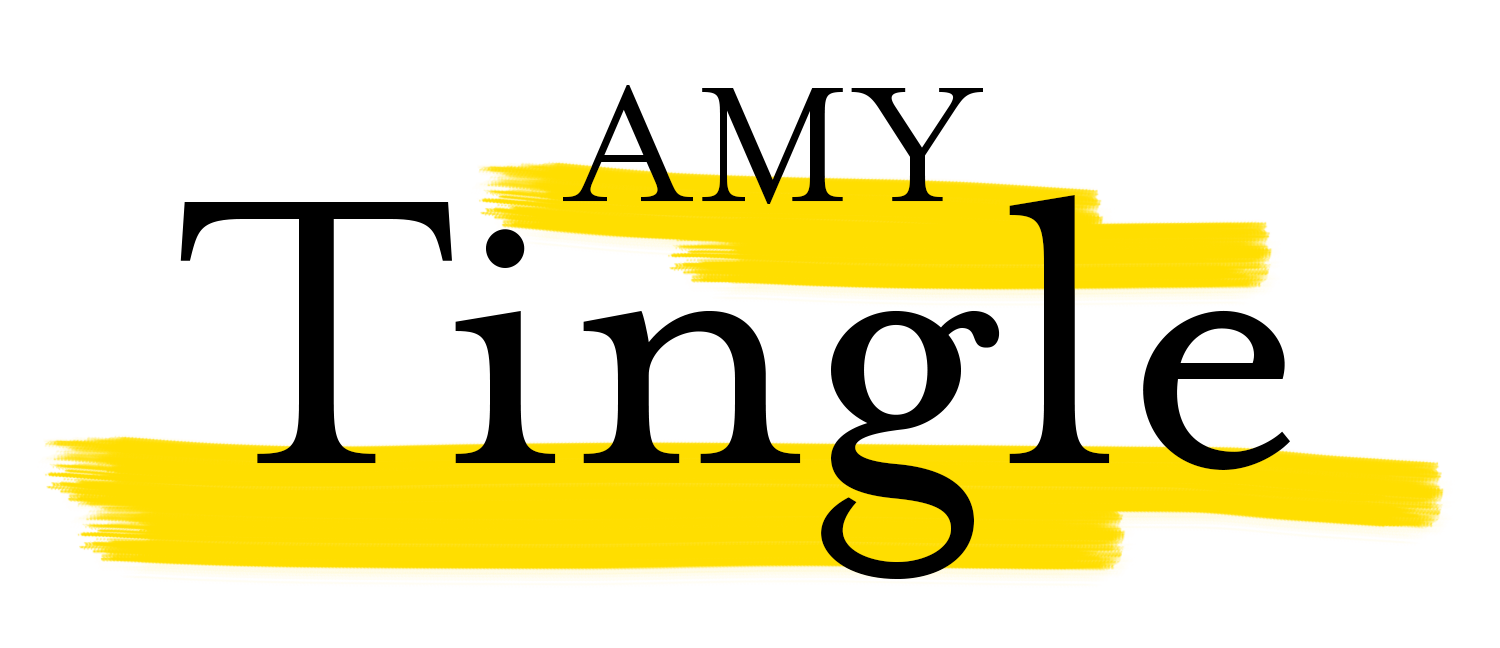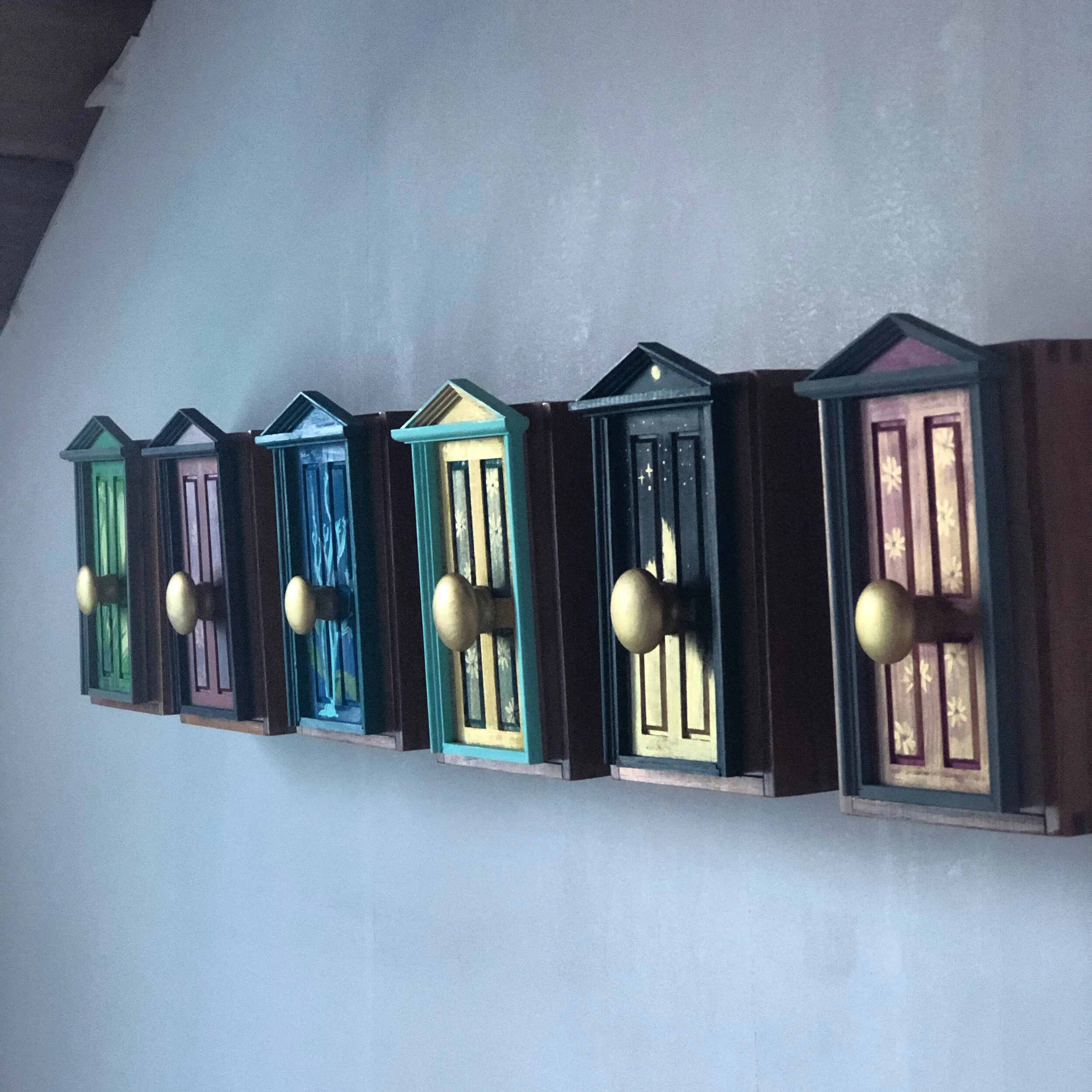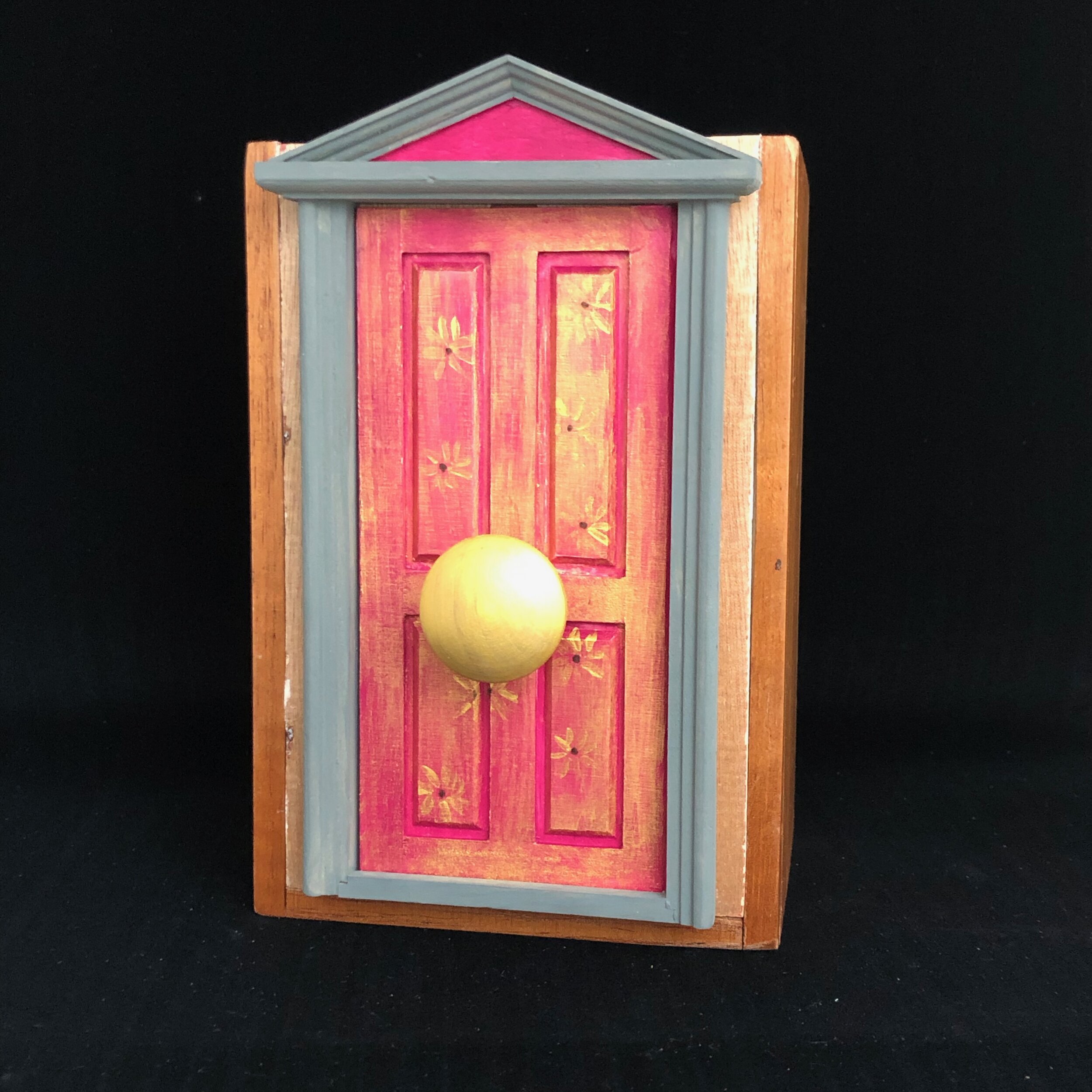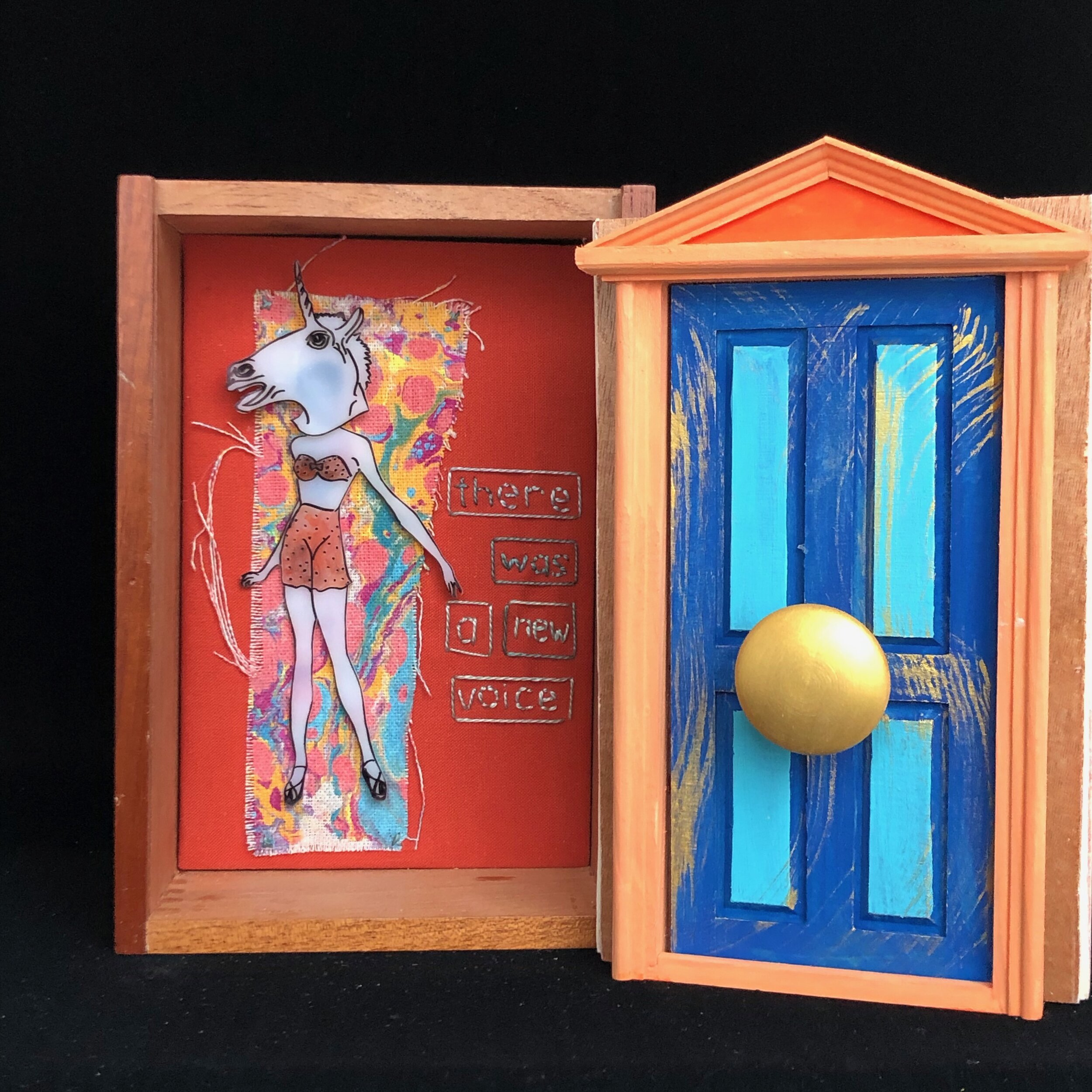She said, she said, she said
Link to our Gallery/Artist Talk
“I beg you take courage; the brave soul can mend even disaster.” Catherine the Great
“She Said, She Said, She Said” is a collective of three female-identifying artists—Amy Tingle, Evelyn Davis-Walker, and Julie Graves Krishnaswami. Using collage, sculpture, video, fiber/textiles, and multi-media installation, this exhibition contemplates how the five senses—touch, sight, hearing, smell, and taste—serve to heal trauma, to mend fractured relationships, and to soothe ancestral heartache. The Collective engages in a conversation about the labor of repair by women, ranging from healing trauma to mending the harms experienced in daily life.
In this exhibit, my mini-series, “Mend my life!” consists of twelve small 3-dimensional compartments. Doorways and openings are symbolic structures that have great significance in our daily lives. Moving through difficulties or challenges, entering into new spaces and opportunities, leaving sadness, loss, a broken heart - doors and openings provide the transition point to change. A door dually symbolizes both endings and new beginnings, as well as act a gateway to rebirth. And while a door may be located at the end of a long dark passageway, there’s an element of hope that there is something on the other side.
When I was in intensive therapy about 15 years ago, my therapist and I developed a system in which I created an imaginary container with a door I could close on the raw, difficult emotional territory we covered during my sessions. I was in charge of whether or not I wanted to open that door in between our weekly meetings or, alternatively, I could leave our work sealed safely behind the door until my next appointment when we would continue the process. It was an incredibly helpful visualization that allowed me both protection and the freedom to control my own healing. For me, what was always waiting on the other side of that door was wholeness. Choosing to tell and integrate my story allowed me to reformulate negative beliefs. In a way, it felt as though I was saving my own life.
The doorways I created for this series were also a collaboration. Through the magic of social media, I asked women who had experienced any kind of trauma to send me a single sense word--a smell, a taste, a sound, or a tactile memory that represented that experience for them. I received the words: vetiver, creaking, sectional, seaweed, heartbeat, wintergreen, rot, glass, frozen, hand, hit, duck, touch, pinned, stairs, freeway, alone, silent, buzz, stolen, metal, suffocating, astral, slippery, jacaranda trees, telephone, peanut butter toast, vulva, abandoned, breath, screaming, and unforgivable. A special thanks to the women who shared these words with me. I am deeply indebted to your bravery.
I blended these words into the doorways I created, meditating on them, giving them shape, sometimes representing a word quite literally in a piece. The idea was to safeguard these words in beautiful containers where the whispers of these stories could be stored and a choice could be made to keep them private or share them through the act of opening or closing the doors. The viewer is asked to slide open these small doors where guardians of these stories await, mythical creatures -- half-woman half-animal collaged using Shrinky Dinks. I have stitched pieces of a Mary Oliver poem “The Journey” into each compartment, a tactile reminder, for me as I stitched and for the viewer who acts as witness, of the strength we find in both our singular and collective voices.
I asked viewers who visited the Turner Center to touch the work, to open the literal doors and imagine exercising agency over our stories and experiences—whether this means retelling, guarding, or sharing them on specific terms. This work addresses the conflicting emotions entangled with sharing stories of trauma—what do we share and with whom? How much feels safe? And how do we remove blockages and regain our power in order to activate the healing process?
In conjunction with the installation/performance presented by Julie Graves Krishnaswami surrounding the testimony of Dr. Christine Blasey Ford, I also shared three pieces of an in-process body of work - three men’s jackets that have been reimagined, which hung on mannequins surrounding a desk where Julie’s transcribed testimony rested. These thrifted jackets have been collaged with images cut from other pieces of collected clothing and embellished with quotes. Each one tells a story. The act of saving the pieces of men’s clothing from the landfill and then adorning them using a historically feminine craft like embroidery, mirrors the way we might mend our society by making gender justice a priority and insisting that anti-capitalist feminism become an essential tool for achieving true transformative equality.
The body of work presented in this exhibition includes metaphors of doors, domesticity, and transcription as pathways to psychic repair. Along these pathways, the artists consider how sensory engagement and literal interactions with their work fosters healing, and ultimately, allows one to choose whether and when to share their own story. The question of how art can serve the act of mending and repairing a broken heart is relevant as we collectively begin to heal as a society. Creation and storytelling aided by the senses can serve to start the process of healing.
To purchase a specific piece of my artwork from this exhibition, please visit my shop.






































